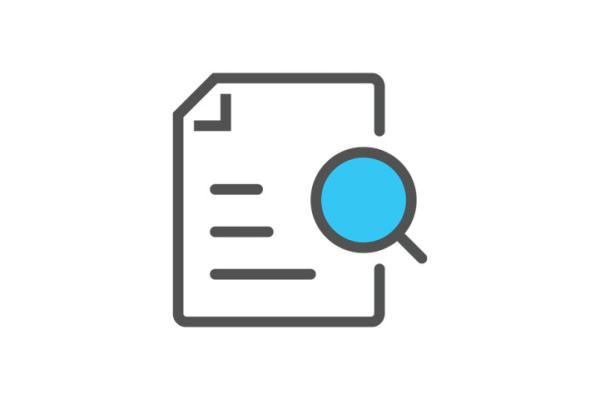In our globalised world, diseases can spread very quickly from one country to another. The early detection of health threats requires continuous robust surveillance and mechanisms for early warning and response.
The EU has set up structures to enable the fast exchange of information among Member States public health authorities and global bodies, such as the World Health Organization (WHO), to detect a threat as early as possible.
Surveillance of infectious diseases and other health threats
Surveillance systems provide information for monitoring communicable disease trends, helping to identify risk factors, and areas for intervention. They provide information for priority setting, planning, implementation and resource allocation for preventive programmes and for evaluating preventive programmes and control measures.
Decision No. 2119/98/EC of the European Parliament and the Council originally established the network for the epidemiological surveillance and control of communicable diseases.
Decision No 2119/98/EC was repealed and replaced by Decision No 1082/2013/EU of the European Parliament and of the Council of 22 October 2013 on serious cross-border threats to health. This new Decision revived the network for the epidemiological surveillance of communicable diseases and related special health issues.
This network brings together the Commission, the European Centre for Disease for Disease Prevention and Control (ECDC) and the competent authorities responsible at national level for epidemiological surveillance. It is operated and coordinated by the ECDC.
The new Regulation (EU) 2022/2371 on serious cross-border threats to health in turn repealed and replaced Decision 1082/2013/EU. It maintains and further strengthens the European network for epidemiological surveillance, which continues to be operated and coordinated by the ECDC.
List of infectious diseases revised
About 50 diseases and special health issues, such as antimicrobial resistance, are monitored through the EU’s epidemiological surveillance network: from Anthrax to Zika. This list was last updated in 2018 through Commission Implementing Decision (EU) 2018/945, when Lyme neuroborreliosis, Dengue, Zika and Chikungunya were added to the list.
The Decision also revised case definitions for several other communicable diseases and related health issues, such as antimicrobial resistance (AMR) and healthcare-associated infections (HAI). The list corresponds to the WHO classifications.
Regulation (EU) 2022/2371 gives the Commission power to update again the list of infectious diseases and relevant health issues, such as antimicrobial resistance, to ensure their coverage by the epidemiological surveillance network.
The Commission also sets the case definitions concerning each infectious disease that Member States use for surveillance and reporting to ECDC, thus ensuring the comparability and compatibility of the collected data at the Union level.
For other types of health threats, surveillance to identify trends and changes in the risk profile requires different approaches. The Commission maintains contact with the relevant EU Agencies and EU countries’ authorities to ensure preparedness plans evolve to meet changing threats.
EU Reference Laboratories for public health
The Regulation (EU) 2022/2371 on Serious Cross-Border Threats to Health introduced a legal mandate for the establishment of EU reference laboratories (EURLs) in public health. EURLs in public health should provide support to national reference laboratories to promote good practice and alignment by Member States on a voluntary basis on diagnostics, testing methods, use of certain tests for the uniform surveillance, notification and reporting of diseases.
The European Commission may designate EURLs via Implementing acts. The first EURLs were designated in March 2024.
They cover the following diseases or health issues:
- EURL for Antimicrobial Resistance (AMR) in bacteria
- EURL for vector-borne viral pathogens
- EURL for emerging, rodent-borne and zoonotic viral pathogens
- EURL for high-risk, emerging and zoonotic bacterial pathogens
- EURL for Legionella
- EURL for Diphtheria and Pertussis
The Early Warning and Response System (EWRS)
EWRS is a rapid alert system for notifying alerts at EU level on serious cross-border threats to health. This confidential web-based system enables the European Commission and the designated competent authorities responsible at national level (called EWRS competent authorities) to communicate permanently.
EU countries can alert, share information and coordinate national responses to serious cross-border threats in a secure timely manner.
The European Commission owns the system, and the ECDC operates the IT platform. EWRS has been successfully used to alert, share information and coordinate measures in response to cross-border events of communicable diseases, with current and previous outbreaks managed, such as COVID-19, Monkeypox, pandemic influenza A(H1N1), Ebola, etc.
EWRS is a system for all threats, including biological, chemical, environmental threats and threats of unknown origin, such as extreme weather events, volcanic ash clouds, chemical spills or biological hazards such as biotoxins.
EWRS operates under strict rules, including on the management of personal data. Commission Implementing Decision (EU) 2017/253 laid down the procedures for the notification of alerts under the EWRS and for the information exchange, consultation and coordination of responses to cross-border health threats.
Commission Recommendation (EU) 2017/1140 further provided rules on personal data that may be exchanged through the Early Warning and Response System (EWRS) to coordinate contact tracing measures in relation to serious cross-border threats to health. These acts that define the EWRS procedures will be updated following the adoption of the new Regulation (EU) 2022/2371.
EWRS new developments are under preparation, considering the COVID-19 lessons learned and the new Regulation (EU) 2022/2371, which requires that the EWRS platform supports reporting all threats.
EWRS should further allow the exchange of public health measures, risk assessments and crisis management functionalities, such as those requiring the exchange of personal health data, for effective digital cross-border contact tracing and medical evacuation.
The extended ECDC mandate also requires that the EWRS is continuously updated, using modern technologies, artificial intelligence, space-enabled applications, other technologies for digitalised contact tracing, etc.
When and how is EWRS activated
EWRS competent authorities or the European Commission issue an alert when a serious cross-border threat to health
- is unusual or unexpected for the given place and time
- causes significant morbidity or mortality, or it grows rapidly in scale
- exceeds national response capacity and affects more than one EU country
- may require a coordinated response at Union level
The alerts are posted no later than 24 hours from when the EU country or the Commission first become aware of the threat. For example, the first notification of what later became known as SARS-CoV-2 (the virus causing COVID-19) was posted by the Commission as early as 9 January 2020, days after China signalled the existence of an unknown virus.
During the COVID-19 response, the EWRS has also supported the exchange of passenger locator forms data for cross-border contact tracing. Contact tracing is an essential tool for an effective response that allows possibly infected individuals to be rapidly identified to isolate, test, or treat them.
This, in turn, helps to stop or slow down the spread of the disease. Exchanging passenger data through EWRS was made possible thanks to two legal acts:
- Commission Implementing Decision (EU) 2021/858 on alerts related to the contact tracing of passengers identified through Passenger Locator Forms
- Commission Implementing Decision (EU) 2021/1212 on alerts related to the contact tracing of exposed persons identified in the context of the completion of Passenger Locator Forms.





